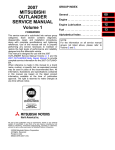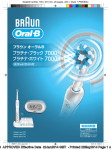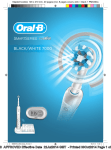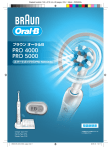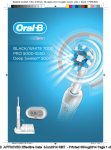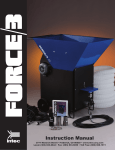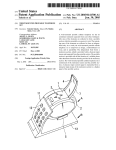Download Bosch® Tachometer Installation Instructions
Transcript
TACHOMETER INSTALLATION INSTRUCTIONS this unit may also be needed. As the mounting configuration will vary significantly from vehicle to vehicle, hardware to mount the tachometer to the vehicle is not included. Whether you use self tapping or a machine screw and nut configuration, #8 hardware including flat and lockwashers is recommended. Please read this instruction manual and review the installation procedures carefully before attempting the installation of your tachometer. CAUTION GENERAL INFORMATION NOTE If additional wire is needed, use #18 or #20 AWG stranded automotive primary wire. For exposed underhood wiring, teflon insulated wire with its associated high temperature capability is recommended. Additional connectors, and hardware, that are not included with SAFETY GUIDELINES To prevent accidents that could result in serious injury and/or damage to your vehicle or test equipment, carefully follow these safety rules and test procedures. SAFETY EQUIPMENT Fire Extinguisher Never work on your car without having a suitable fire extinguisher handy. A 5-lb or larger CO2 or dry chemical unit specified for gasoline/chemical/ electrical fires is recommended. Fireproof Container Rags and flammable liquids should be stored only in fireproof, closed metal containers. A gasolinesoaked rag should be allowed to dry thoroughly outdoors before being discarded. Safety Goggles We recommend wearing safety goggles when working on your car, to protect your eyes from battery acid, gasoline, and dust and dirt flying off moving engine parts. NOTE: Never look directly into the carburetor throat while the engine is cranking or running, as sudden backfire can cause burns. LOOSE CLOTHING AND LONG HAIR (MOVING PARTS) Be very careful not to get your hands, hair or clothes near any moving parts such as fan blades, belts and pulleys or throttle and transmission linkages. Never wear neckties or loose clothing when working on your car. JEWELRY Never wear wrist watches, rings or other jewelry when working on your car. You’ll avoid the possibility of catching on moving parts or causing an electrical short circuit which could shock or burn you. removed from the PARK position. This feature must be disabled when it is necessary (for testing) to have the parking brake engaged when in the DRIVE position. Refer to your vehicle service manual for more information. HOT SURFACES Avoid contact with hot surfaces such as exhaust manifolds and pipes, mufflers (catalytic converters), radiator and hoses. Never remove the radiator cap while the engine is hot, as escaping coolant under pressure may seriously burn you. SMOKING AND OPEN FLAMES Never smoke while working on your car. Gasoline vapor is highly flammable, and the gas formed in a charging battery is explosive. BATTERY Do not lay tools or equipment on the battery. Accidentally grounding the “HOT” battery terminal can shock or burn you and damage wiring, the battery or your tools and testers. Be careful of contact with battery acid. It can burn holes in your clothing and burn your skin or eyes. When operating any test instrument from an auxiliary battery, connect a jumper wire between the negative terminal of the auxiliary battery and ground on the vehicle under test. When working in a garage or other enclosed area, auxiliary battery should be located at least 18 inches above the floor to minimize the possibility of igniting gasoline vapors HIGH VOLTAGE The carbon monoxide in exhaust gas is highly toxic. To avoid asphyxiation, always operate vehicle in a well-ventilated area. If vehicle is in an enclosed area, exhaust should be routed directly to the outside via leakproof exhaust hose. High voltage — 30,000 to 50,000 volts — is present in the ignition coil, distributor cap, ignition wires and spark plugs. When handling ignition wires while the engine is running, use insulated pliers to avoid a shock. While not lethal, a shock may cause you to jerk involuntarily and hurt yourself. SETTING THE BRAKE JACK Make sure that your car is in Park or Neutral, and that the parking brake is firmly set. The jack supplied with the vehicle should be used only for changing wheels. Never crawl under car or run engine while vehicle is on a jack. VENTILATION NOTE: Some vehicles have an automatic release on the parking brake when the gear shift lever is This unit is designed for use on twelve (12) volt negative (-) ground four (4) cycle automotive type engines. It is not designed for use on positive (+) ground electrical systems, two (2) cycle engines, aircraft or marine applications. It is compatible with most distributor equipped and distributorless ignition systems. SUGGESTED TOOLS Wire and terminal crimping, stripping and cutting tool(s) Screwdrivers and nut drivers as required by hardware used Small open end wrench set: 1/4" to 3/8" sizes may be required Electric drill Drill bits: #29 or 9/64", # 18 or 11/64", 5/16", 3/8" FIGURE 1 MOUNTING THE TACHOMETER FIGURE 2 LAMP SOCKET CYLINDER SELECTION This tachometer should be checked for cylinder setting before installation (see figure 1). Position the CYLinder selector switch on the rear of the tachometer so that the switch actuator is opposite the number which matches the number of cylinders in the engine. For Chrysler DISTRIBUTORLESS IGNITION SYSTEM CONNECTIONS, connection to Pin 43 of the Single Board Engine Controller on Distributorless Ignition equipped Chrysler vehicles requires that the CYLinder selector switch be set to the four (4) cylinder position, regardless of the number of cylinders in the engine. LAMP SUBSTITUTION OR REPLACEMENT Your tachometer is supplied with an automotive type, wedge base (full size tachometers) or subminiature wedge base (mini tachometers) lamp, for illumination. This lamp should provide satisfactory illumination intensity in most applications, however the following substitute lamps are available at your local auto parts store, and may allow you to custom tailor the illumination characteristics of the tachometer to your application. Note the higher the MSCD (Mean Spherical Candela) of the lamp, the brighter it is. LAMP # MSCD 73 37 74 161 194 194A 168 .3 .5 .75 1 2 3 COLOR BASE CLEAR SUBMINIATURE WEDGE CLEAR SUBMINIATURE WEDGE CLEAR SUBMINIATURE WEDGE CLEAR WEDGE CLEAR WEDGE AMBER COATED WEDGE CLEAR WEDGE The lamp socket is located at the top rear of the tachometer (see figure 1). To remove the lamp, gently grasp the black lamp socket (use pliers if necessary) and twist it counterclockwise approximately 1/8 turn until it stops. Pull the socket with lamp straight out of the tachometer housing. Remove the lamp from its socket by pulling it straight out. Replace the lamp as required following the chart above. Reinstall the socketed lamp by rotating it against the tachometer’s PC board until it drops into place, and then rotate it approximately 1/8 turn clockwise until it reaches its mechanical stop. WARNING - SAFETY PRECAUTION! Neither the driver nor any passenger should compromise the safe operation of the vehicle by attempting to readjust the tachometer in any way while the vehicle is in motion! RED LINE/ SHIFT POINTER RED LINE / SHIFT POINTER Adjust the RED LINE/SHIFT POINTER by sliding it around the meter bezel (see figure 2). This pointer may be set at any point on the meter scale, such as engine red line, or transmission shift point. NOTE FUNCTIONAL QUICK CHECK Although every attempt has been made to make this tachometer electronically compatible with as many different ignition systems as possible, new ignition systems are being developed continually. It is suggested (especially if you have an engine that has a non OEM, or aftermarket ignition system) that the tachometer be electrically connected to the vehicle, (using alligator clip leads or other suitable means) following the steps below, and an electrical functional check of the tachometer be made, prior to making a permanent installation. 1. Clip the BLACK lead from the tachometer to the negative (-) battery terminal. 2. Clip the RED lead from the tachometer to the positive (+) battery terminal. 3. Clip the GREEN lead from the tachometer to the negative (-) side of the ignition coil or tach signal connection point as indicated in the ELECTRICAL CONNECTIONS section of this manual. Do not allow this connection to touch ground! 4. The WHITE lead is for instrument panel lighting, and need not be connected for this check. Your tachometer is designed to be mounted on top of or underneath the dashboard, or on the steering column (see figures 3 and 4). If you choose the steering column mounting configuration, it will be necessary to obtain a hose clamp which is large enough in diameter to encircle the steering column. Cut off any excess strap from the hose clamp, when clamp mounting is complete. CAUTION Some steering columns are made to be collapsible upon impact. Care should be taken when tightening the clamp to avoid damage to the column. Be sure not to interfere with the movement or mechanism of adjustable/tilt steering columns. Select a mounting location that allows a clear view of the tachometer, but does not obstruct access or view of controls, or view of other dashboard instruments, or the road. CAUTION Position the tachometer in its specific location and determine wire routing and connection locations before drilling any holes! Be sure to check behind areas of intended drilling for obstructions before drilling! Mark hole locations, and drill holes as required per the following chart. # 8 Self-tapping screws – #29 or 9/64" drill bit # 8 Machine screw hardware – #18 or 11/64" drill bit Clearance hole for wiring harness – 5/16" drill bit Once the tachometer is adjusted to its final position, securely tighten all hardware. FIGURE 3 5. When all connections are secure, start the vehicle’s engine. Confirm the operation of the tachometer throughout the operating temperature range of the engine, and at both curb idle, and higher engine speeds. The tachometer should follow the speed of the engine smoothly, and show no signs of erratic operation. Should you encounter unsatisfactory tachometer operation (erratic, no reading, etc.) on engines equipped with high performance and/or aftermarket ignition systems or ignition coils, you may have selected the incorrect tach connection point for the tachometer’s GREEN lead, or a tachometer filter assembly may be required. Contact the manufacturer of the ignition system or ignition coil for information regarding tachometer connection to his product and/or the availability of an electrical filter assembly if required. When you are satisfied with tachometer performance, proceed to the permanent installation instructions which follow. . . . . FIGURE 4 RUBBER PAD HOSE CLAMP ELECTRICAL CONNECTIONS Refer to your vehicle service manual while carefully following the wiring instructions. CAUTION For your own personal safety, and to prevent possible damage to the electrical system of your vehicle during the installation, disconnect the negative (-) battery cable. Reconnect this cable after installation is complete. BLACK, RED, AND WHITE WIRE CONNECTIONS – ALL SYSTEMS Route all wires carefully. Securing them with nylon tie wraps (not included) is suggested. Do not route wires along or against sharp edges which could cut the insulation. Also, do not route them along hot engine surfaces, such as exhaust manifolds, where high temperature could melt the insulation, or near spark plug wires. Route wires through an existing hole in the firewall, or drill a 3/8" hole where desired, making sure there are no hidden wires, hoses, etc. that could be damaged. Insert the supplied rubber grommet in this hole for added protection against wire damage or shorting (see figure 5). RUBBER GROMMET ELECTRICAL TAPE CRIMP ENDS CONNECTOR CONNECTOR LIP UNLOCKED TACHOMETER WIRE VEHICLE HARNESS WIRE RPM x 1000 SPLICE CONNECTOR LOCKED DISTRIBUTOR EQUIPPED ENGINES IMPORTANT Although electrical ground (BLACK wire connection) is available under the dashboard, grounding the instrument near or under the dash may cause it to operate erratically, as any ground connection other than the negative (-) battery terminal may be “electrically noisy”. 2. Connect the RED wire to any vehicle harness wire which is energized with battery voltage ONLY when the ignition key is in the ON (RUN) position, NOT OFF or ACCeSSORIeS (see figures 6 and 7). 3. Connect the WHITE wire to the instrument panel lighting circuit or any lead that is controlled by the instrument panel dimmer control (see figure 7). SOLDER PIERCING CLIP The GREEN wire provides the tachometer with the engine RPM (speed) signal. SPLICE If your vehicle's engine is CONNECTOR FUSE equipped with a DISTRIBBOX UTOR IGNITION SYSTEM proceed to the GREEN RED TO WIRE CONNECTION BATT. DISTRIBUTOR EQUIPPED VOLTAGE ENGINES section in this TERMINAL manual. If your vehicle’s INSTRUMENT engine is equipped with a LAMP DIS (DISTRIBUTORLESS IGNITION SYSTEM) proWHITE ceed to the GREEN WIRE CONNECTION - DISTRIBUTORLESS IGNITION SYS4 3 5 TEM EQUIPPED ENGINES 2 6 7 section of this manual. DIS 1 8 equipped engines are char0 acterized by their lack of an BLACK WIRE ignition distributor. In place TO GROUND of the distributor, will be one or more “ignition coil packs”. Unlike the ignition distributor which has a basically round shape, the coil pack is typi1. Connect the BLACK wire to the negative cally a square or rectangular package. (-) battery terminal, or a clean unpainted chassis ground using a ring terminal or other suitable means (see figure 7). GREEN WIRE CONNECTION – SEE THE GREEN WIRE CONNECTION SECTIONS OF THIS MANUAL Make the following connections with splice connectors, or by an alternative method if desired (see figure 6). GREEN WIRE CONNECTION TO DIMMER SWITCH NOTE Some vehicles (typically imported) wire the dimmer control into the ground side of the instrument panel lighting circuit, as opposed to the more conventional “hot” or twelve (12) volt side. In vehicles which use this circuit, connect the WHITE wire to a circuit which is energized by the headlamp switch. Connect the GREEN wire to the negative (-) side of the ignition coil. This terminal may also be referred to as the TACH, TACH TeST, DeC, or eCU terminal. Wiring diagrams can be found in your vehicle service manual. See the list at the end of these instructions for service manual sources. GREEN WIRE CONNECTION – DISTRIBUTORLESS IGNITION SYSTEM EQUIPPED ENGINES Many domestically built vehicles (and some imports) are now using a new type of ignition system which does not use a distributor, but instead, a system of multiple ignition coils, and the necessary sensors and computer controls to fire them in the proper order. This type of system is commonly referred to as a DISTRIBUTORLESS IGNITION SYSTEM or DIS. Your tachometer is designed to work with these systems, however proper connection to them is important. The BLACK (ground), RED (12-14 volt supply), and WHITE (instrument lamp) connections are the same as for distributor equipped vehicles, however connection of the GREEN (tach signal) wire to the ignition is specific to the engine and ignition system. Wiring diagrams can be found in your vehicle service manual. See the list at the end of these instructions for service manual sources.



